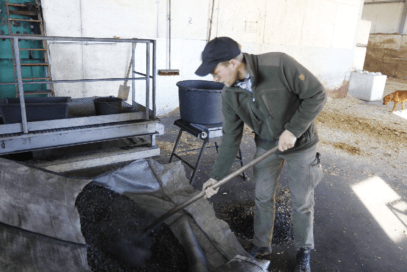
VCI-S-1000 Removal
BioChar
Selected Projects
VCI-S-1000 Removal

Location: Lower Saxony, Germany
Project executor: Bioenergy Dieckmann eG, 38350 Helmstedt
Time: 2022
Type: Long-term carbon sequestration in biochar
When burned or decomposed, plant residues release the CO2 they have bound. However, if plant residues are converted into plant charcoal in a pyrolysis process, a large proportion of the CO2 is bound in the Biochar. Once this Biochar is spread on a field and incorporated into the soil, it is stable in the soil for over 1,000 years.